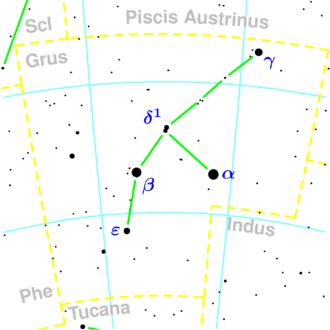NGC 7097
| Galaxy NGC 7097 |
|
|---|---|
|
|
|
| AladinLite | |
| Constellation | crane |
|
Position equinox : J2000.0 , epoch : J2000.0 |
|
| Right ascension | 21 h 40 m 12.9 s |
| declination | -42 ° 32 ′ 22 ″ |
| Appearance | |
| Morphological type | E / LINER |
| Brightness (visual) | 11.6 mag |
| Brightness (B-band) | 12.6 mag |
| Angular expansion | 1.8 'x 1.2' |
| Position angle | 20 ° |
| Surface brightness | 12.5 mag / arcmin² |
| Physical data | |
| Affiliation | NGC 7079 group LGG 446 |
| Redshift | 0.008726 ± 0.000063 |
| Radial velocity | 2616 ± 19 km / s |
|
Stroke distance v rad / H 0 |
(117 ± 8) · 10 6 ly (35.8 ± 2.5) Mpc |
| history | |
| discovery | John Herschel |
| Discovery date | September 5, 1834 |
| Catalog names | |
| NGC 7097 • PGC 67146 • ESO 287-048 • MCG -07-44-029 • 2MASX J21401288-4232218 • SGC 213704-4246.0 • LDCE 1468 NED004 | |
NGC 7097 is an elliptical galaxy with an active nucleus of the Hubble type E in the constellation Crane in the southern sky . It is estimated to be 117 million light years from the Milky Way .
Together with NGC 7070 , NGC 7079 , NGC 7107 , PGC 66909 , PGC 66985 , PGC 67078 and PGC 67160 , it forms the NGC 7097 group or LGG 446 .
The object was discovered by John Herschel on September 5, 1834 .
